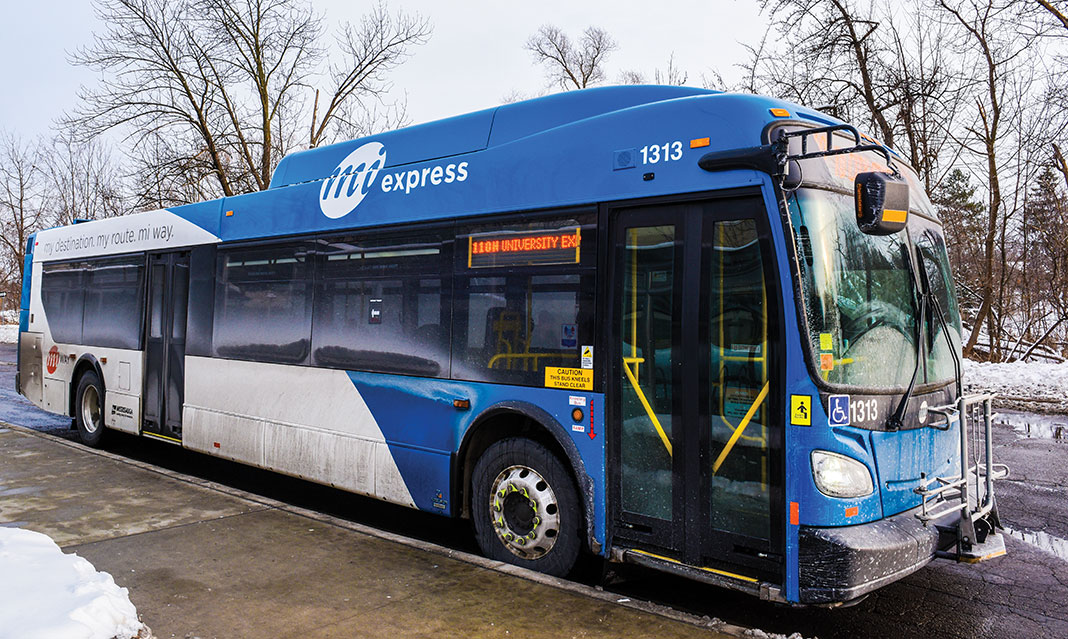The city of Mississauga recently released its transportation master plan, which offers a preliminary idea of how the city will tackle issues surrounding traffic indigestion, limited space, and the freedom to move over the next twenty years.
The master plan has six main goals: safety, inclusion, integration, connectivity, health and resilience. The plan is a result of ‘Mississauga Moves,’ a city project involving extensive technical research, and engagement with stakeholders and the public.
According to the plan, the main mode of travel in Mississauga is by automobile, with 85 per cent of trips taken to, from, or within Mississauga being by car. Transit makes up only eleven per cent of trips taken, but the ridership continues to grow every year. MiWay ridership grew more than fifteen per cent from 2011 to 2016.
Recently, overcrowding has become an issue on Miway buses for UTM students.
By 2041, the city hopes to establish more ‘high occupancy vehicle’ (HOV) lanes, as well as work in partnership with the province of Ontario to enhance the streetscape around highway interchanges.
They also hope to invest in a “long-term transit network plan” that will include a potential high-frequency network to ensure public transportation needs are met.
“By 2041, Mississauga’s transportation system will have to accommodate an extra 300,000 trips per day” states the master plan.
The city has also released a survey that will allow the public to offer feedback on the draft transportation master plan. They plan on producing an annual “progress update” to allow city staff, stakeholders, partners, and the public to see whether progress is being made toward the goals of the plan.



